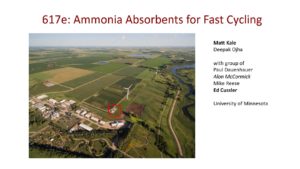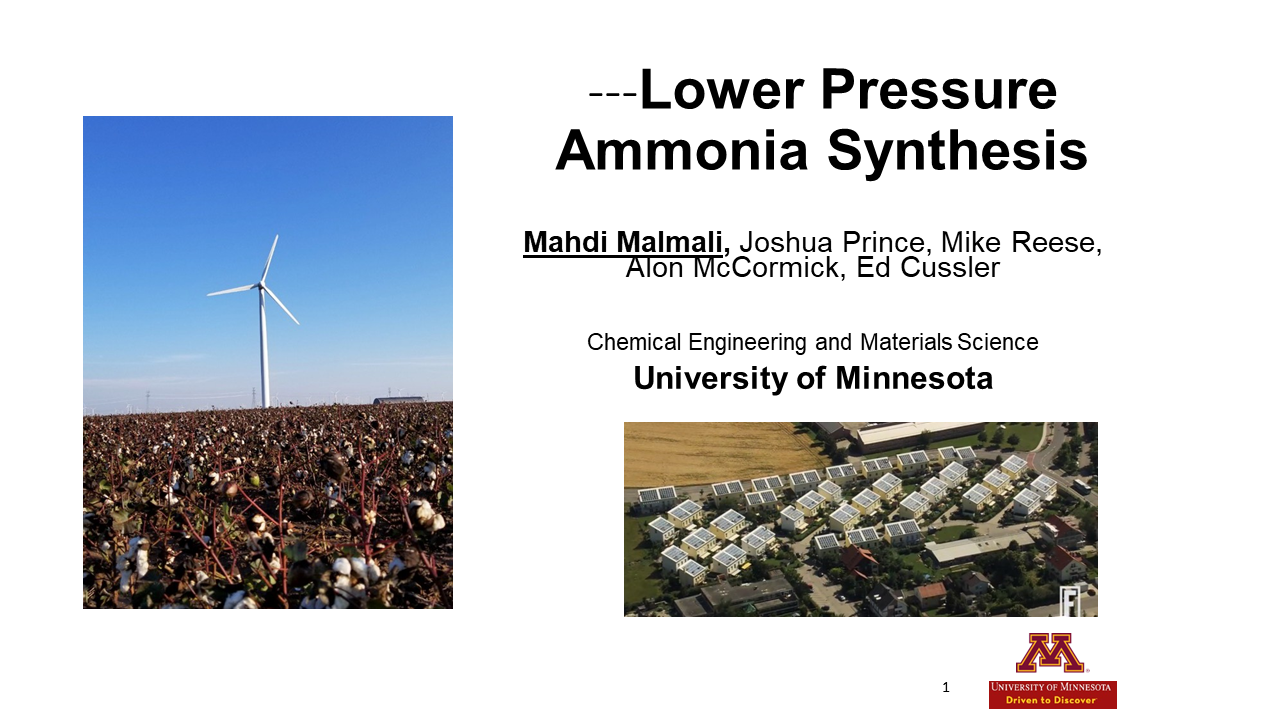Presentation
Optimizing absorption to improve Haber-Bosch synthesis
Ammonia absorber columns offer an alternative separation unit to replace condensation in the Haber-Bosch synthesis loop. Metal halide salts can selectively separate ammonia from the reactor outlet gas mixture and incorporate it into their crystal lattice with remarkably high thermodynamic capacity. While the salts’ working capacity can be limited and unstable when they are in their pure form, the capacity is stable and can be high when using a porous silica support. Here, we discuss optimal conditions for uptake and release of ammonia. The production capacity (ammonia processed per unit absorbent and per unit production time) depends on processing parameters…






